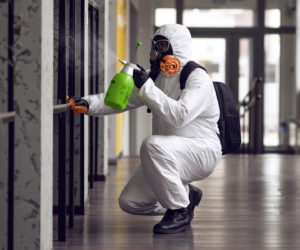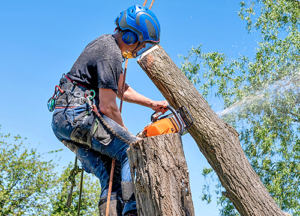Concrete Contractors Dallas TX are essential in bringing construction blueprints to life. Their work encompasses project planning, site preparation, concrete mixing and pouring, and finishing.
They also assess potential risks and develop strategies to mitigate them. In addition, they must possess good time management skills to ensure that projects are completed on schedule.

Concrete is the foundation of most construction projects, including houses, buildings, roads and sidewalks. It requires skill and patience to work with, and a licensed concrete contractor is a qualified professional who knows the ins and outs of working with concrete materials. They understand how the different types of concrete behave and how environmental factors affect curing. They also know how to plan a construction project, which is critical for ensuring that the project meets deadlines and budget.
While skill and experience are essential for concrete contractors, licensing and insurance are necessary to protect themselves and their clients. Licensing provides a level of credibility and professionalism that is important to prospective clients, while insurance covers unforeseen accidents and damage during the project.
Insurance premiums depend on several factors, such as business size, location, claims history, and more. In general, the more risks a concrete company takes on, the higher the premiums. The type of coverage you need can also vary depending on the type of construction you specialize in. For example, a concrete contractor who builds bridges may need liability coverage that specifically addresses structural damage.
In addition to liability insurance, concrete contractors should have workers’ compensation and tools and equipment coverage. Workers’ compensation insurance pays for medical bills and lost wages if an employee is injured on the job, while tools and equipment coverage offers protection against theft of valuable gear while it is in transit between jobs. These policies are typically available as part of a business owner’s policy (BOP), which bundles general liability and commercial property insurance for savings.
Being bonded can make you more attractive to prospective clients, as many private construction companies will not work with concrete contractors who aren’t bonded. It can also help you avoid legal problems, such as fines and penalties if an employee is caught stealing construction materials or other items from the job site. Lastly, a bond can help you avoid costly legal fees and court costs in the event of a lawsuit.
Reputation
Concrete contractors play an important role in construction projects. Their expertise helps to ensure that all aspects of a project are executed efficiently and effectively. They are responsible for laying the foundation of buildings and roads, bringing blueprints to life. A career as a concrete contractor requires dedication and a passion for the craft.
A reputable concrete contractor will have extensive experience in the industry and will be licensed and insured. They should also have a good track record with previous clients. You can find out about their reputation by searching for reviews on websites like Trustpilot and BBB. You can also ask friends and family for recommendations. When choosing a concrete contractor, it’s best to get estimates from several different companies to compare prices. Be sure to request quotes with detailed line item breakdowns for labor and materials. A quality concrete contractor will stand by their work with warranties, so be sure to ask about the warranty terms.
In addition to being knowledgeable about the construction process, a reputable concrete contractor will have excellent organizational skills. They will know how to plan each phase of a construction project, including scheduling deliveries and materials. This will ensure that all work is completed on schedule and within budget.
It is crucial for a concrete contractor to have attention to detail, especially when mixing materials and working on structural elements. Deviating from set measurements can result in costly mistakes that could derail the entire project. It’s also important for concrete contractors to be able to assess potential risks and develop strategies to mitigate them.
The job of a concrete contractor is a complex and demanding one, requiring a wide range of skills. In addition to being able to read and interpret blueprints, they must be able to understand building regulations and codes. They must be able to work well with architects, engineers, and general contractors to bring their visions to life.
A concrete contractor must have a passion for the craft and be willing to learn new techniques. They must also be able to manage multiple projects at once and meet deadlines. If they are not able to do so, they will risk losing business and potentially being sued for negligence. They should also have a strong work ethic and be willing to invest in the right equipment such as Onfloor concrete grinders to avoid any accidents on the job site.
Experience
Concrete contractors are responsible for the structural foundations of homes, commercial buildings, and other structures. They work closely with architects, engineers, and other construction professionals to ensure that the concrete they construct meets design specifications and industry standards. They also ensure that the structure can withstand the intended loads and conditions. Concrete contractors are not only skilled workers, but they have a passion for their craft and take pride in their work. A successful contractor will have a mix of technical skills and practical experience, which they will have gained through both formal education and on-the-job training.
When hiring a concrete contractor, look for one who has a track record of completing projects successfully and on time. You should also check whether they offer a warranty on their work. This will give you peace of mind that the job will be completed properly, and if it isn’t, you’ll be able to get it fixed.
Another important aspect to consider is the length of time a concrete contractor will need to complete a project. A good contractor will be able to provide you with an accurate estimate of how long the project will take, which will help you budget your time and money accordingly. In addition, you should make sure that the contractor carries proper insurance and follows safety regulations on the job site.
A quality concrete contractor will have a vast understanding of different types of concrete materials, allowing them to select the best mixtures and methods for each project. They will also be able to identify potential problems and come up with creative solutions that will keep the project on schedule.
In addition to constructing the skeleton of a building, concrete contractors are also responsible for finishing the concrete surfaces. They use various techniques to achieve the desired texture, smoothness, and decorative elements of the concrete, ensuring that it meets aesthetic requirements. They are also knowledgeable about different finishes and can suggest the best ones for your project.
Finally, a good concrete contractor will have excellent communication skills and be able to collaborate with other construction professionals effectively. This is vital to the success of any project, as it helps maintain a high level of quality and ensures that all deadlines are met.
Cost
Concrete contractors work on a variety of projects, ranging from residential patios and sidewalks to commercial foundation slabs and building walls. They may also use concrete for landscaping, such as driveways and garden paths. These jobs require a lot of labor and equipment. Depending on the type of job, concrete prices vary. On average, a cubic yard of concrete costs $110 to $180. This includes the cost of the concrete and delivery charges. It does not include the cost of labor to install the concrete.
The price of concrete varies by region, as well as the size of the project. Larger projects, such as concrete driveways and garage floors, can benefit from bulk discounts and lower per-unit costs. Reinforcements like rebar and wire mesh can increase the strength of a concrete slab, which will also affect the overall project cost. Smaller projects, such as sidewalks and patios, typically require less concrete and can be charged a short load fee if the amount ordered does not meet the minimum quantity requirement for delivery.
While starting a concrete business requires significant startup costs, the upfront investment can pay off after a year or two in business. These costs may include the purchase of a work vehicle and specialized equipment. It is also important to consider the cost of ongoing maintenance and repairs, as these can add up over time.
Another consideration is the potential for delays due to weather conditions. Concrete work is a messy, outdoor process that is affected by heat, moisture and cold. Even a small change in weather can delay production, resulting in lost productivity and higher project costs.
To help minimize these costs, contractors should try to schedule projects during slower times of the year. This will save them money on materials, and reduce the likelihood of delays due to weather. Additionally, they should seek out ways to boost their productivity. This can be done by leveraging collaboration software, such as mobile-friendly tools that allow engineers and concrete workers to mark up plans or make changes from anywhere. These tools will increase productivity and improve communication between teams.








